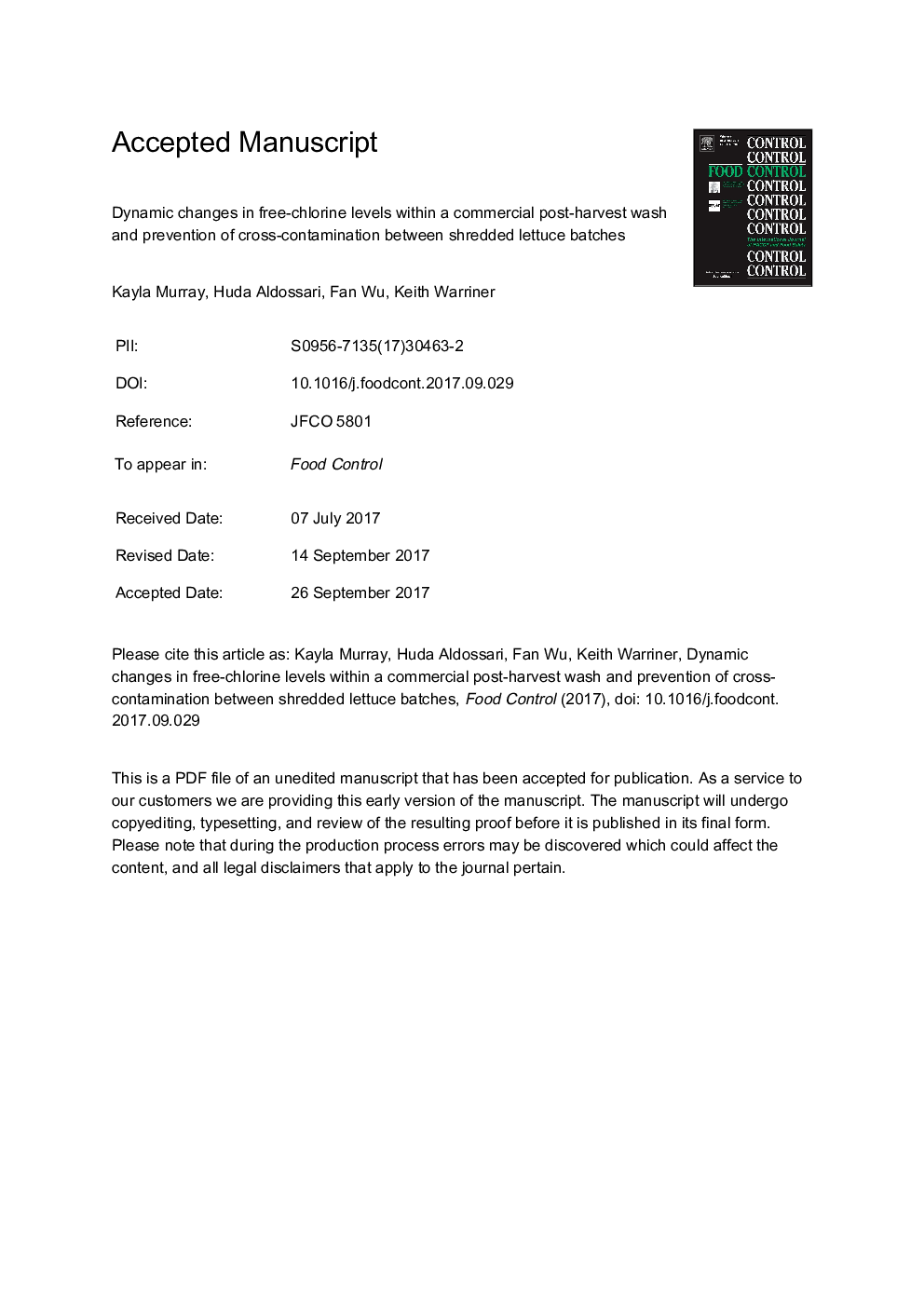| Article ID | Journal | Published Year | Pages | File Type |
|---|---|---|---|---|
| 8888198 | Food Control | 2018 | 30 Pages |
Abstract
The dynamic changes in free-chlorine levels within a commercial shredded lettuce washing process and implications for preventing cross-contamination by human pathogens during processing has been determined. The commercial lettuce processing line incorporated a pre-wash in Wash Tank 1 followed by a biocidal wash in Wash Tank 2. Within the commercial wash process, the free-chlorine concentration fluctuated in a cyclic pattern (ranging from 4 to 27Â ppm) in Wash Tank 1 but was depleted within Wash Tank 2 (low as 0.1Â ppm). Despite the variation in free-chlorine levels the Oxidation Reduction Potential of the wash tanks remained stable and consequently there was no significant correlation to free-chlorine levels and ORP (r2Â =Â 0.37). From analysis of the spent wash water it was found the Chemical Oxygen Demand (COD) was significantly higher in Wash Tank 1 (>5000Â mg/l) compared to Wash Tank 2 (800-1001Â mg/l). Significantly, both wash tanks operated below the chlorine demand that partly explained the inability to maintain constant free-chlorine levels. In laboratory studies, the spent wash water (containing disinfection byproducts) from the Wash Tanks supported inactivation of Salmonella (>3 log cfu reduction), Listeria monocytogenes (>4 log cfu reduction) and Escherichia coli O157:H7 (1-3 log cfu reduction). By adding chlorine beyond the chlorine breakpoint it was possible to achieve >4 log cfu reduction of the aforementioned pathogens, in addition to minimizing cross-contamination events between batches. The study has illustrated that commercial wash tanks for leafy greens operate below the chlorine breakpoint and hence maintaining specific free chlorine levels would be an unsuitable monitoring metric. Although disinfection byproducts contributed to antimicrobial capacity of the wash tank water it would be challenging to designate a specific limit of free-chlorine for purpose of process monitoring.
Related Topics
Life Sciences
Agricultural and Biological Sciences
Food Science
Authors
Kayla Murray, Huda Aldossari, Fan Wu, Keith Warriner,
